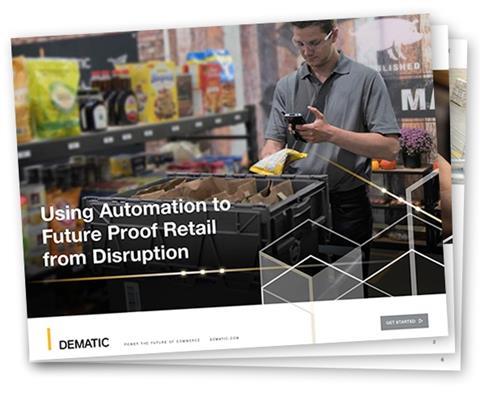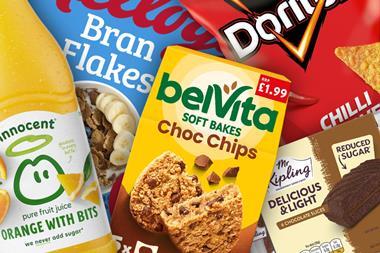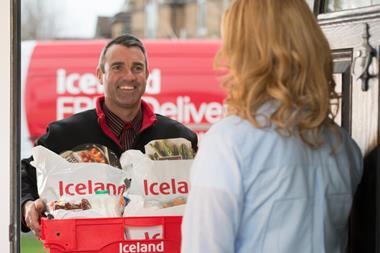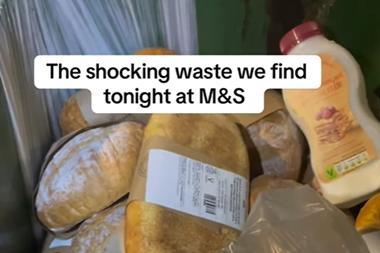As the surge in grocery e-commerce looks set to continue beyond the Covid-19 pandemic, how can retailers ensure that they are serving their consumers well and understanding their shopping habits and requirements?
Is there anything more ordinary than writing a grocery list? Each of us has done it countless times, just like our parents and grandparents did before us.
Across generations, a small piece of paper and a pen proved to be the perfect strategy to plan the next week’s groceries. The shopping experience was just as analogue, straightforward and predictable. And so was the supply chain, which ensured stocked shelves in stores.
But the past year has thoroughly shaken up our daily routines. For many, it changed the way we do our grocery shopping, which caused an extraordinary boom in e-commerce. And those great changes in consumer behaviour have created great challenges for grocery retailers, putting them in need of smarter strategies.
Is e-commerce here to stay in grocery?
Pre-Covid-19, it was the most natural thing in the world to drive to the store, get one item after the other from your shopping list, get enticed by some additional things, pay for your stuff, and go home. At that time, most grocers around the world were seeing e-commerce penetration in the 1% to 3% range – nothing to get overly excited about.
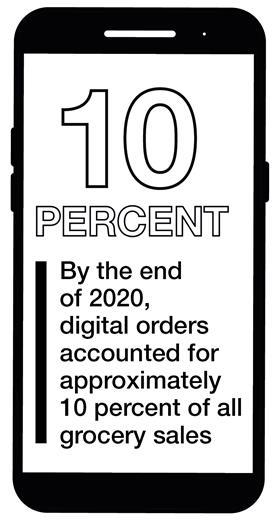
But as the pandemic hit various regions, shopping from home and having your groceries delivered – or collected for you to pick up at the store – suddenly became more popular, simply because it was safer. Within a matter of weeks, e-commerce volumes exploded, growing to around 10% of total grocery sales by the end of 2020 in many regions. But will this trend continue even after the danger of Covid-19 comes to an end?
To cut a long story short, experts say yes. Many consumers, who possibly would never have thought of ordering their groceries online before the pandemic, have now learned that online grocery shopping is not only safer, but also more convenient. In many households, the old, analogue shopping list has been replaced by the virtual shopping cart – including practical reminders, recipe suggestions and much more.

From week to week, as the pandemic continued, the virtual shopping experience turned into an everyday habit. As a result, experts anticipate post-pandemic grocery e-commerce penetration to range from 15% to 25%, depending on region. And this substantial increase has required grocers to restructure their entire supply chain networks.
Dealing with shifting consumer expectations
Apart from getting ready to handle significant e-commerce volumes, grocers must face another challenge: Since the grocery e-commerce channel is new to most participants, consumers are still figuring out what exactly it is they want. Expectations of service levels still need to be defined – as do the different ways organisations could possibly respond to these expectations.
It’s a learning process on both sides, yet grocers need to learn more quickly. They must actively seek feedback from their consumers and adapt to it. But while feedback is important, access to consumer and order data is vital. Full data capture is the holy grail for future growth – for several reasons.
On the one hand, it allows for more personalised consumer experiences: knowing exactly what is happening with their order and when it will be fulfilled ensures online shoppers are more satisfied. On the other hand, getting control of the data results in better forecasting and replenishment algorithms for grocers and puts them in a position where they can create greater efficiencies in their supply chain. But to take advantage of that data, grocers first have to find the right strategies to get the whole picture.
The power of knowing what’s on whose shopping list
Since the pandemic started, we have been in a state of constant flux with an increasing number of consumers turning to e-commerce and grocers still finding ways to deal with that. And it was at the moment of initial uncertainty that another protagonist entered the stage: third-party delivery companies that hire contract workers to pick orders from grocery store shelves for consumer pickup or delivery to consumer homes.
Granted, this is a mammoth task that may have seemed unmanageable to many at first. It is no secret that fulfilment of e-commerce orders is a more costly operation than store replenishment – and that grocery margins are already razor-thin.
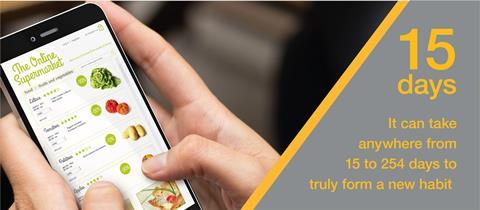
However, the current disruption means grocers need to future-proof their businesses. Their situation is comparable to the general merchandise and apparel retailers when e-commerce first launched. Many of them sat on their heels, not quite knowing how to assess the situation. A few years later, it was too late for many organisations to react to the fact that e-commerce was here to stay.
Grocers need to learn from these mistakes and set themselves on the right path to profitability – and build up the capabilities to accurately track and measure it throughout their supply chain. Because now is the right time to not just react to changed circumstances, but to strategically plan for future growth.
Time to ramp up e-ommerce for a post-Covid-19 reality
In regions like North America, delivery companies such as InstaCart and Shipt have quickly dominated e-commerce sales for grocery stores. Their shoppers are packing aisles, creating frustration among regular grocery consumers. Other regions, such as Europe, have not experienced the competition from delivery companies so far, but still clog their aisles with their own employees picking online orders.
Delivery companies are giving the grocers themselves an even bigger frustration – they own the consumer data, which prevents grocers from tying e-commerce purchases to specific users.
So, to get the full data capture and make use of it, grocers must find a way to bypass the delivery companies. And the best way to do that is to offer their consumers the same service – but on their own platform that is closely linked to their own stores.
And how about that good ol’ shopping list? Are we to bid farewell to pen and paper soon? Probably not. But more and more, those lists are likely to be on our phones and computers as e-commerce creates new routines for new realities.
The role that Dematic plays
Dematic is differentiated by both the solutions it delivers and the services to support them. The company considers each project as a partnership – one focused on customer success. So, Dematic not only works with its customers to find the right solutions, it also provides the help and expertise to ensure the value of those solutions.
Download our playbook today to learn:
● Why traditional retailer fulfilment strategies don’t offer the flexibility to meet unprecedented consumer demand
● How retailers can future-proof their businesses from unexpected disruptions by making strategic investments in automation
● What are the critical factors for consideration when selecting an automation provider








